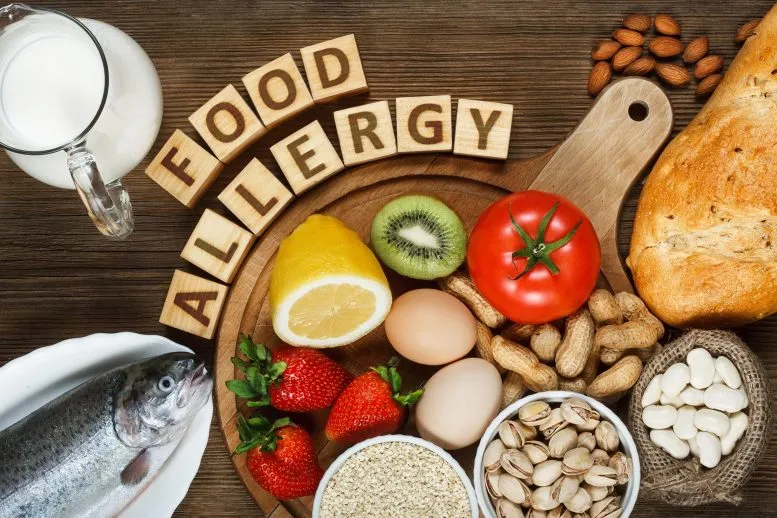Millions of people and their families are affected by food allergies and other forms of food sensitivity. The immune system of the body reacts to specific proteins in food, resulting in food allergies. Anaphylaxis, the name given to life-threatening symptoms such as trouble breathing or shock caused by an allergic reaction to food, can range in severity from minor hives and swelling of the lips to severe, life-threatening symptoms.
Food allergies can’t yet be cured, despite claiming preventative and treatment options. As a preventative step, it is critical to recognize and understand food allergies, as well as the foods to avoid, as soon as possible.
Milk, eggs, peanuts, tree nuts, sesame, soy, fish, shellfish, and wheat are among the most common food allergies.
Symptoms
Some people may experience a mild allergic reaction to a certain food. Other people may be scared and even fear for their lives if they experience an allergic reaction to a food. Within minutes to two hours after ingesting the any such food, most people begin to experience the symptoms of a food allergy. The onset of symptoms may take several hours in some cases.
Most people with food allergies have the following signs and symptoms:
- Tingling or itching in the mouth
- Itching, hives, or eczema
- Asthma-like symptoms such as a swollen face, lips, tongue and throat
- Wheezing, a runny nose, or difficulty in breathing are all symptoms of bronchitis
- Abdominal discomfort, diarrhea, or nausea or vomiting are all symptoms of gastrointestinal distress.
- Fainting, dizziness, or lightheadedness
Food Allergy Triggers
Any food can cause an allergic reaction in a person. About 90% of all food allergies may be traced back to just eight foods. These foods are:
1. Milk
Allergic reactions to milk are common throughout the world, with infants experiencing the highest rates of milk allergy of any age group16. Only a small percentage of adults17, 18, 19 are affected by this condition, which affects children as young as 6 years old in up to 90% of cases. In contrast to milk allergies, lactose intolerances may be caused by a genetically based inability to break down lactose, the sugar in milk.
Within the first hour after consuming milk proteins, many people have gastrointestinal, skin, and respiratory symptoms as a result of an allergic reaction to the protein.
2. Peanuts
Even if you’re not allergic to peanuts, it’s hard to deny the prevalence of peanut allergies, which affect 4% – 8% of children, and 1% – 2% of adults. More people die from anaphylaxis caused by peanut allergies than any of the other food allergies.
When it comes to food, it’s vital to read labels and be conscious of what you’re putting into your body.
3. Eggs
Egg allergy is mostly observed in young under 16 and is less common in older children and adults. Most children with egg allergies can eat baked eggs because the protein structure is disrupted by heat. An egg allergy can be tolerated or even disappear over time if a person consumes baked goods regularly that include eggs.
4. Shellfish
A shellfish allergy is nothing to joke at.
Due to the fact that this is a chronic illness, it is possible for reactions to occur suddenly and without much warning. People can have an allergic reaction to even little amounts of shellfish or frying vapors. There is a strong correlation between shellfish allergies and other food allergies. As a result, those with shellfish allergies should exercise caution when eating at seafood restaurants or fish markets.
5. Tree Nuts
Allergy to nuts is the most common food intolerance in the world. Various kinds of actual nuts make up this diverse collective (e.g. Brazil nut, chestnut, hazelnut, pine nut, walnut). Nuts can be found in a variety of fruits and legumes (e.g. almond, pecan nut, coconut, cashew, peanut).
To provoke a reaction and to cause a severe reaction, nuts are considered to be one of the most potent allergenic foods. Nut allergies are estimated to affect roughly 1.1 percent of the general population in the United States. Symptoms of a nut allergy can range from mild hives to life-threatening anaphylaxis, which can be fatal in rare cases.
6. Sesame
Allergic reactions to seeds can be serious. A person with a seed allergy should exercise caution when consuming anything made with seed oils, even if the oil has been thoroughly refined to remove any allergen-causing proteins. There is a wide range of reactions to sesame, from moderate cramps to anaphylaxis.
7. Soybeans
The proteins in soybeans cause allergy reactions in people who are sensitive to soy. Even though allergic reactions are typically moderate, they can become life-threatening, as they can with any food allergy.
Children are more likely to develop an allergy to soy than teens and adults. There are approximately 0.4 percent of children who have a soy allergy. 50 percent of children with a soy allergy will outgrow it within a year, and most will outgrow it by the time they are 10.
8. Grains and Cereals
Within the first few years of life, wheat and other grain allergies are most typically seen in infants. People with an IgE-mediated cereal allergy can experience moderate reactions to the skin or digestive tract, as well as more acute, potentially life-threatening reactions.
Bakers’ asthma (from occupational exposure to grain flour dust) and wheat-dependent exercise-induced anaphylaxis (WDEIA), a less common kind of IgE-mediated allergy, are two further examples of wheat allergy.
Conclusion
If you have a food allergy, you can still lead a healthy lifestyle. To avoid food allergies, you must avoid any foods and ingredients that may induce an allergic response.
In addition, avoiding your trigger foods may need the use of a nutritional supplement to make up for the nutrients you’ll be missing. Before embarking on a new diet, consult with the best Gastroenterologist in Lahore.
FAQs
1. What is the number 1 most common food allergy?
More people die from anaphylaxis caused by peanut allergies than any of the other four food allergies we’ve mentioned. Sometimes only a minor interaction with peanuts might trigger a severe reaction in some people.
2. Is food intolerance a genetic issue?
Allergy susceptibility tends to be impacted by both genetic predisposition and environmental variables, while food allergies may have a genetic component. Consider the possibility that environmental circumstances shared by members of the same family may potentially have a role in the development of food allergies.
3. How long do food allergies last?
It is common for symptoms to begin within minutes after ingesting a food and last for up to two hours. A second wave of symptoms may reappear one to four hours after the first symptoms have faded away (or sometimes even longer). In chemistry, a biphasic reaction is the scientific term for this second wave.

